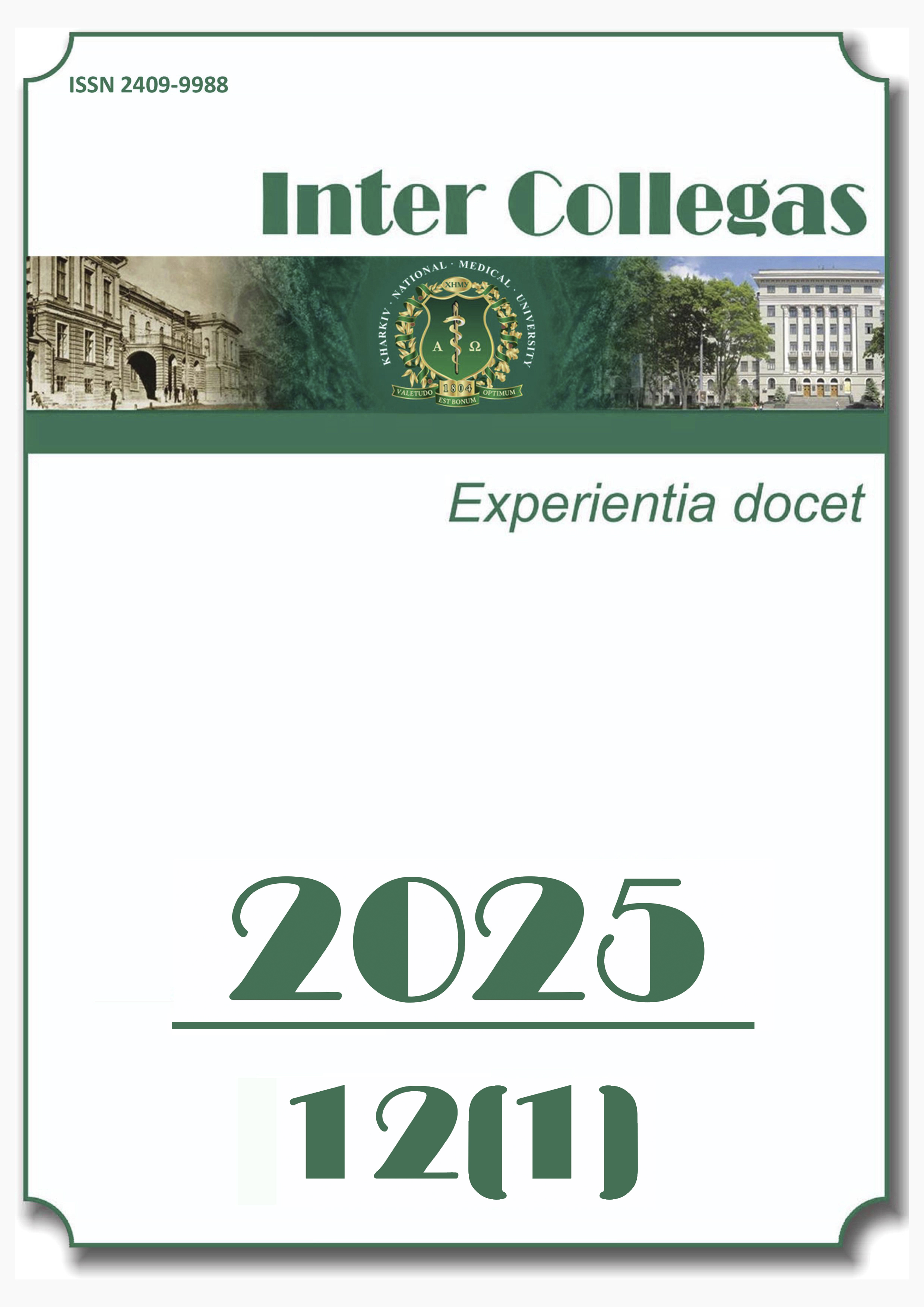Abstract
Introduction. Inflammation is a reaction of living tissue on injury. Nowadays there is a wide spectrum of anti-inflammatory medications that are used for the treatment of many problems. But because their application is associated with a wide range of side effects, there is a need for the development of new pharmaceutical compositions to maximise patient safety.
Aim. To carry out biochemical evaluation of anti-inflammatory action of celecoxib in combination with caffeine on the biochemical markers of inflammation (sialic acids and ceruloplasmin) and to determine its anti-exudative action on formalin-induced paw edema in rats.
Materials and Methods. The study involved male Wistar Albino Glaxo (WAG) line rats, divided into six treatment groups: control, formalin-induced, celecoxib (5 mg/kg), caffeine (0.6 mg/kg), a combination of celecoxib and caffeine (5 mg and 0.6 mg/kg), and diclofenac sodium (8 mg/kg). Biochemical studies were carried out by using the blood serum samples of white laboratory rats (WAG line). Anti-inflammatory activity of celecoxib and its pharmaceutical composition with caffeine was studied using the formalin-induced paw edema model. The animals were divided into the same groups as in the Anti-Exudative Activity (AEA) study.
Results. It was shown, that composition of celecoxib and caffeine exerted higher anti-inflammatory activity versus celecoxib and it is efficient in relation to the exudation processes. Biochemical studies of celecoxib, caffeine and their composition on the level of sialic acid level and ceruloplasmin level in the blood serum as well as study of anti-exudative activity of the proposed composition have shown, that caffeine potentiates pharmacological activity of celecoxib in formalin-induced paw edema model.
Conclusion. The findings indicate that the combination of celecoxib and caffeine is a promising therapeutic option for inflammatory conditions.
Keywords: аnti-inflammatory drugs, anti-exudative action, biomarkers of inflammation.
Archived: https://doi.org/10.5281/zenodo.15281956
References
Shuba N, Voronova T, Kokunov Yu. Risks of NSAIDs and safe therapy selection. Ukrainian Journal of Rheumatology. 2018;7(428):3-8. Available at: https://www.rheumatology.kiev.ua/article/10712/npvp-riski-i-vybor-bezopasnoj-terapii [in Ukrainian].
Egudina E. Nonsteroidal anti-inflammatory drugs: evidence of efficiency, facts, myths. Neurology: aspects of treatment. 2023;3:20-1. Available at: https://healthua.com/multimedia/userfiles/files/2021/Nevro_3_2021/nevro_3_2021_st20.pdf [In Ukrainian]
Kolasinski SL, Neogi T, Hochberg MC, Oatis C, Guyatt G, Block J, et al. Arthritis Foundation Guideline for the Management of Osteoarthritis of the Hand, Hip, and Knee. Arthritis care & Research. 2020;72(2):220-3. DOI: 10.1002/acr.24131. PMID: 31908149.
Syrova G, Petyunina V, Makarov V, Lukianova L, Chalenko N. Creation of anti-inflammatory pharmaceutical compositions (review). Inter Collegas. 2022;9(1):93-101. DOI: 10.35339/ic.9.1.93-101.
Szeto C, Sugano K, Wang J, Fujimoto К, Whittle S, Modi G, et al. Non-steroidal anti-inflammatory drug (NSAID) therapy in patients with hypertension, cardiovascular, renal or gastrointestinal comorbidities: joint APAGE/APLAR/APSDE/APSH/APSN/PoA recommendations. Gut. 2020;69(4):617-29. DOI: 10.1136/gutjnl-2019-319300. PMID: 31937550.
Lee S, Lee J, Kae S, Jang H, Jung E. Effect of Nonsteroidal Antiinflammatory Agents on Small Intestinal Injuries as Evaluated by Capsule Endoscopy. Digestive Diseases and Sciences. 2021;66(8):2724-31. DOI: 10.1007/s10620-020-06511-z 200. PMID: 32748299.
Hladkykh F. Nonsteroidal anti-inflammatory drugs: therapeutic and side effects, ways of their optimization. Vinnytsia: Tvory; 2022. 216 p. Available at: https://ukroj.com/downloads/monographs/monograph-2022-1.pdf [in Ukrainian].
Lukianchuk E. Gastrointestinal safety of NSAIDs at the application to clinical practice. Ukrainian Journal of Rheumatology. 2021;1(83):49-53. DOI: 10.37987/1997-9894.2023.6-7(272-273).289578. [In Ukrainian].
Dolgenko М, Luchinska Yu . Celecoxib at the case of comorbid illnesses. Interdisciplinary problems. 2022;5(6):522-3. Available at: https://worldmedicine.ua/wp-content/uploads/2024/02/lekoxa-kaps-01-ua.pdf10 Gordo AC, Walker Chris, Armada B, Zhou D. Efficacy of celecoxib versus ibuprofen for the treatment of patients with osteoarthritis of the knee: A randomized double-blind, non-inferiority trial. Journal of International Medical Research. 2017;45(1):59-74. DOI: 10.1177/0300060516673707. PMID: 28222627.
Syrova G, Petyunina V. Coxibs: pro and contra. Book of abstracts of XIІ International scientific and methodological internet-conference "Modern concepts of teaching natural science in medical educational institutions". Kharkiv: KhNMU; 2019. P. 95-7.
McGettigan P, Henry D. Cardiovascular risk with non-steroidal anti-inflammatory drugs: systematic review of population-based controlled observational studies. PLoS Med. 2011;8(9):101-9. DOI: 10.1371/journal.pmed.1001098. PMID: 21980265
Ialongo D, Tudino V, Arpacioglu M, Messore A, Patacchini E, Costi R, et al. Synergistic Effects of Caffeine in Combination with Conventional Drugs: Perspectives of a Drug That Never Ages. Pharmaceuticals. 2023;16(5):730. DOI: 10.3390/ph16050730. PMID: 21980265.
Nikolajsen L, Haroutiunian S. [Caffeine as adjuvant analgeticum for treating acute pain]. Ugeskrift for Laeger [Journal of the Danish Medical Association]. 2013;175(42):2486-88. PMID: 24629115. [In Danish].
Diener H, Pfaffenrath V, Pageler L, Peil H, Aicher B. The fixed сombination of acetylsalicylic acid, paracetamol and сaffeine is more effective than single substances and dual combination for the treatment of headache: a multicentre, randomized, double-blind, single-dose, placebo-controlled parallel group study. Cephalalgia. 2005;25(10):776-87. DOI: 10.1111/j.1468-2982.2005.00948. PMID: 1616225.
Polski A, Kasperek R, Sobotka-Polska K, Poleszak E. Review on analgesic effect of co-administrated ibuprofen and caffeine. Current Issues in Pharmacy and Medical Sciences. 2014;27(1):10-3. DOI: 10.2478/cipms-2014-0003.
Weiser T, Richter E, Hegewisch A. Efficacy and safety of a fixed-dose combination of ibuprofen and caffeine in the management of moderate to severe dental pain after third molar extraction. European Journal of Pain. 2018;22(1):28-38. DOI: 10.1002/ejp.1068. PMID: 28805281.
Predel H, Ebel-Bitoun C, Lange R, Weiser T. A randomized, placebo- and active-controlled, multi-country, multi-center parallel group trial to evaluate the efficacy and safety of a fixed-dose combination of 400 mg ibuprofen and 100 mg caffeine compared with ibuprofen 400 mg and placebo in patients with acute lower back or neck pain. J Pain Res. 2019;12:2771-83. DOI: 10.2147/JPR.S217045. PMID: 31576162.
Kurita Varoli F, Sucena Pita M, Sato S, Issa JP, do Nascimento C, Pedrazzi V. Analgesia evaluation of 2 NSAID drugs as adjuvant in management of chronic temporomandibular disorders. Scientific World Journal. 2015;2015:359152. DOI: 10.1155/2015/359152. PMID: 25874243.
Kozhemyakin Yu, Khromov O, Boldyreva N, Dobrelia N, Sayfetdinova G. Scientific and practical recommendations for keeping laboratory animals and working with them. Kyiv: Interservice; 2017. 182 p. [Іn Ukrainian].
European Convention for the protection of vertebrate animals used for experimental and other scientific purposes (1986). ETS No.123. Strasbourg. The Council of Europe [Internet]. http://conventions.coe.int/treaty/en/treaties/html/123.htm [accessed 31 Mar 2025].
Stefanov O. Methodological recommendations "Preclinical studies of drugs". Kyiv: Avitsena; 2001. 528 p. [In Ukrainian].
Guide for the care and use of laboratory animals. 8th ed. Washington (DC): National Academies Press (US); 2011. 246 p.

This work is licensed under a Creative Commons Attribution-NonCommercial-ShareAlike 4.0 International License.


